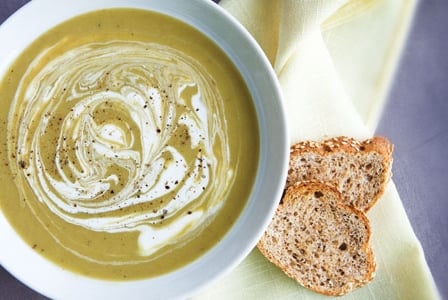
Try our delicious recipes made with frozen fruits and vegetables. Recapture summer\’s bounty in the off-season.
Try our delicious recipes made with frozen fruits and vegetables. Recapture summer\’s bounty in the off-season.
There’s nothing quite like biting into a hazardously juicy local tomato on a sultry summer evening or gobbling up a handful of freshly picked blueberries. But after fresh local options have faded, it’s time to consider their frozen counterparts.
Thanks to global imports, produce bins can stay stacked with familiar fruits and vegetables even in the off-season. Sometimes, however, frozen produce has a leg up on fresh. Imported fresh fruits and vegetables may be picked long before reaching their peak ripeness, allowing them to ripen during their long journey to stores.
Unfortunately, produce that is picked before ripening has yet to develop a full arsenal of nutrients. Also, several days of transportation along with additional time spent at the grocery store can cause further declines in nutritional quality. An International Journal of Food Science and Nutrition study found that vitamin C levels were significantly lower among broccoli with a passport than those locally harvested in season.
In contrast, frozen fruits and vegetables are often picked at peak ripeness and then quickly flash-frozen to lock in nutrients and flavour. Unlike fresh, frozen produce prices stay fairly stable throughout the year and can be the ticket to an ultra-quick weeknight dinner. Most are already chopped, pitted, or peeled, and in some cases (such as soups and smoothies), can go straight from freezer to pan or blender. And compared to lowly canned fruits and veggies, frozen often outranks them every way—taste, texture, and nutrition.
Cream of the crop
When pushing your grocery cart through the frozen food aisle, consider stocking up on these subzero heroes to help tide you over until local fruits and veggies are ripe for the picking.
| Frozen produce | Nutritional prowess |
| blueberries | packed with antioxidants and fibre |
| broccoli | good source of vitamin C, folate, and vitamin K |
| Brussels sprouts | provides potassium to slash the risk for stroke |
| butternut squash | full of the antioxidant beta carotene |
| corn | great source of lutein, an antioxidant used for eye health |
| cranberries | contains manganese, a trace mineral needed for proper metabolism |
| mango | plenty of antioxidant vitamin C to knock out cell-damaging free radicals |
| peas | a healthy dose of fibre and bone-building vitamin K |
| raspberries | a mere cup supplies 11 g of hunger-quelling fibre |
| spinach | brimming with folate, a B-vitamin necessary for proper cell formation |
| strawberries | a leading source of vitamin C for healthy cartilage and skin |
Recipes
- Butternut Almond Pancakes with Strawberry Maple Sauce
- Spinach Calzones
- Green Monster Soup
- Mango Chicken Curry
- Very Berry Pudding
Frozen food rules
From store to stovetop, here’s how to get more mileage out of your frozen assets.
Rule #1: Fondle the bag
Choose only bags of frozen fruits and vegetables where you can feel the individual contents. A bag that feels like a block of ice may be a sign that the contents have previously melted, which damages the texture.
Rule #2: Choose the big O
When possible, select certified organic frozen items to lower your possible exposure to pesticides and genetically modified items such as corn.
Rule #3: Stay pure
Steer clear of any frozen fruits and vegetables with added sweeteners, salt, or mysterious sauces. The only ingredient should be the fruit or vegetable itself.
Rule #4: Don’t overload your freezer
Packing your freezer too full with food prevents air from circulating and chilling food properly.
Rule #5: Know the lifespan
The bag of peas that’s been in your freezer since that last time the Maple Leafs were in the playoffs should be compost. Stored in a 0 F (-18 C) freezer, frozen fruits and vegetables have a shelf life of about one year before their flavour, texture, and nutrients suffer. Write your purchase date on each frozen item before it goes into the freezer and once open, store it in a resealable freezer bag so it doesn’t take on ice crystals and surrounding odours.
Rule #6: Easy does it
For taste, texture, and nutrient retention don’t overcook. Use the shortest cooking time possible and little, if any, water to avoid vitamin C loss. Opt for steaming instead of boiling.
Rule #7: Don’t refreeze
For quality control, once thawed, it’s best not to refreeze frozen fruits and vegetables.

